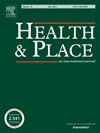巴塞罗那城市和交通发展对健康的影响评估:案例研究。
IF 3.8
2区 医学
Q1 PUBLIC, ENVIRONMENTAL & OCCUPATIONAL HEALTH
引用次数: 0
摘要
背景:需要重新考虑城市空间,以应对日益严峻的健康和环境挑战。城市密度和交通系统是造成空气污染的重要因素,对公众健康产生负面影响。巴塞罗那已经开始了转型,引入了超级街区模式,这是一种被证明对健康有益的城市发展模式。然而,人们对各种规划好的城市和交通干预措施对健康的影响缺乏了解。本研究旨在探讨巴塞罗那规划的城市和交通发展(例如超级街区、低排放区、战术城市规划、港口电气化),并估计其相关暴露对健康的影响。方法:我们利用模拟的二氧化氮减排情景,其中考虑了实施巴塞罗那2018-2024年城市交通计划(UMP)和港口电气化项目带来的变化。UMP包括不同的干预措施,如低排放区、战术城市规划(减少汽车车道)、现有的超级街区和街道绿化。我们为2019年建立了一个基线情景,没有实施UMP或港口电气化。我们设计了三种实施UMP的情景:a)私家车使用量不变;b)私家车使用量减少25%;c)港口电气化后私家车使用量减少25%。我们估计了对二氧化氮水平的影响,并根据比较风险评估方法进行了健康影响评估,以证明这些情景对成人死亡自然原因的影响。结果:在私家车使用没有变化的情况下,二氧化氮减少了5.9%,每年预防67例(34-133 95% CI)过早死亡。私家车使用减少25%的情景导致二氧化氮减少17.6%,每年防止199例(101-392 95% CI)过早死亡。在私家车使用减少25%的情况下,加上港口电气化,二氧化氮减少19.4%,每年防止228人(115-447 95% CI)过早死亡。结论:我们的研究结果表明,在巴塞罗那实施减少汽车使用和港口电气化的措施可以显著减少空气污染,防止成年人过早死亡。这强调了雄心勃勃的城市和交通政策与改善公共卫生的相关性。决策者应考虑采取果断行动并更广泛地实施此类措施,以获得更大的健康效益。需要进一步研究以探索其他措施及其潜在影响,促进制定全面的城市和运输战略。本文章由计算机程序翻译,如有差异,请以英文原文为准。
Health impact assessment of urban and transport developments in Barcelona: A case study
Background
Urban spaces need to be rethought to address growing health and environmental challenges. Urban density and transport systems contribute significantly to air pollution, negatively impacting public health. Barcelona has begun a transformation by introducing the Superblock model, an urban development with proven health benefits. However, there is a lack of understanding of the health impacts of various planned urban and transport interventions. This study aims to explore planned urban and transport developments in Barcelona (e.g. Superblocks, Low emission zone, tactical urban planning, port electrification) and estimates the health impacts of their related exposures.
Methods
We utilized modelled NO2 reduction scenarios, which considered changes from implementing Barcelona's Urban Mobility Plan (UMP) of 2018–2024 and the Port electrification project. The UMP includes different interventions such as the low emission zones, tactical urban planning (reducing car traffic lanes), existing superblocks, and street greening. We established a baseline scenario for the year 2019, with no implementation of UMP or Port electrification. We devised three scenarios implementing the UMP: a) no change in private car use b) a 25% reduction in private car use, and c) a 25% reduction in private car use with port electrification. We estimated the effect on NO2 levels and conducted a health impact assessment following a comparative risk assessment methodology to demonstrate the impacts of these scenarios on natural cause of adult mortality.
Results
The scenario with no change in private car use resulted in a 5.9 % reduction in NO2, preventing 67 (34–133 95% CI) premature deaths annually. The scenario with a 25% reduction in private car use led to a 17.6% reduction in NO2, preventing 199 (101–392 95% CI) premature deaths annually. Adding port electrification to the 25% reduction in private car use scenario resulted in a 19.4% reduction in NO2, preventing 228 (115–447 95% CI) premature deaths annually.
Conclusion
Our findings suggest that implementing measures to reduce car use and electrifying the port in Barcelona can significantly reduce air pollution and prevent premature deaths in adults. This emphasizes the relevance of ambitious urban and transport policies in improving public health. Policymakers should consider assertive actions and broader implementation of such measures for greater health benefits. Further research is needed to explore additional measures and their potential impacts, facilitating the development of comprehensive urban and transport strategies.
求助全文
通过发布文献求助,成功后即可免费获取论文全文。
去求助
来源期刊

Health & Place
PUBLIC, ENVIRONMENTAL & OCCUPATIONAL HEALTH-
CiteScore
7.70
自引率
6.20%
发文量
176
审稿时长
29 days
期刊介绍:
he journal is an interdisciplinary journal dedicated to the study of all aspects of health and health care in which place or location matters.
 求助内容:
求助内容: 应助结果提醒方式:
应助结果提醒方式:


